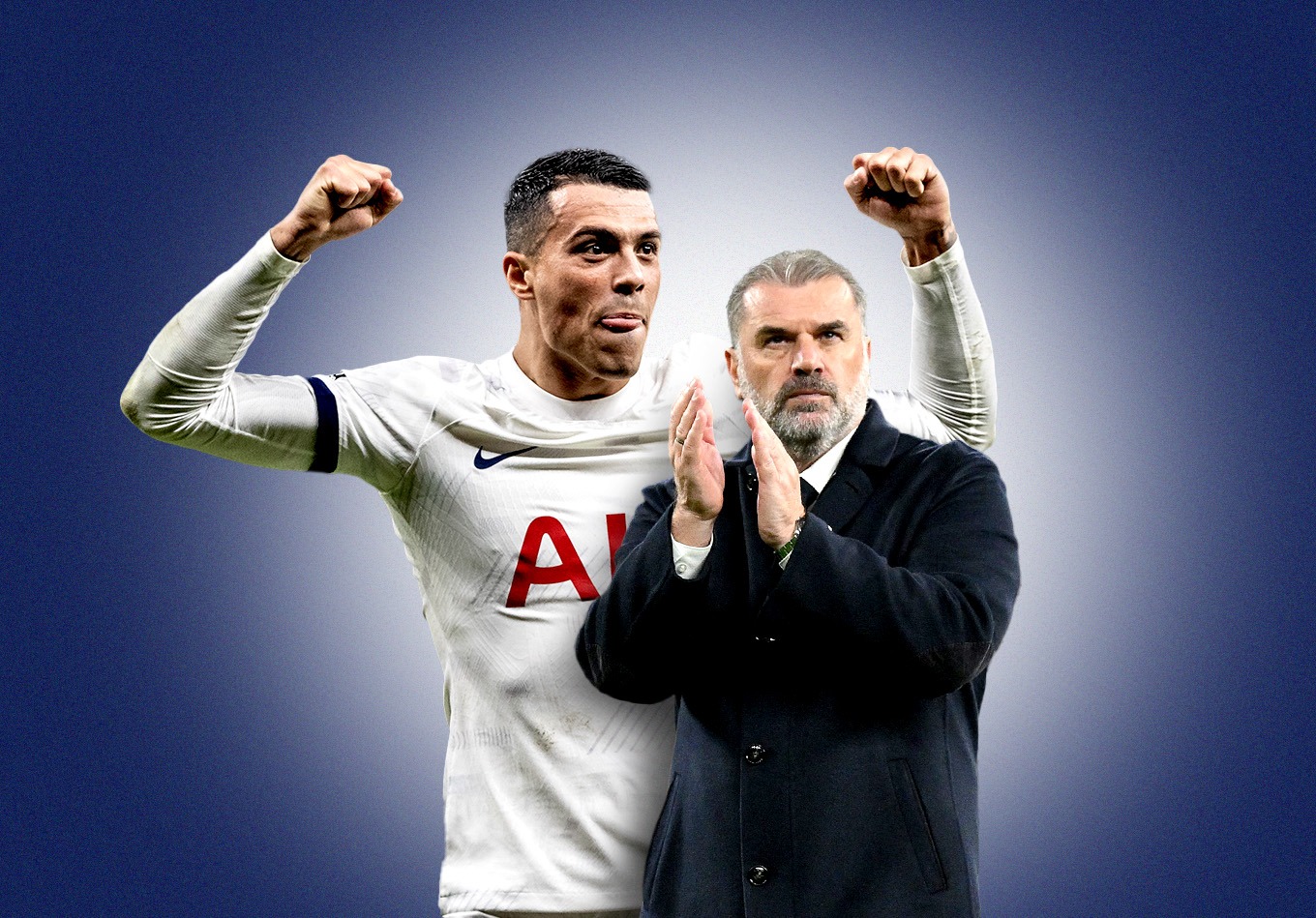Pedro Porro was billed as the perfect flying wing-back for Antonio Conte’s system, and so when Ange Postcoglou was appointed there were doubts about whether the Spaniard could play as an inverted full-back. How wrong those doubts were…
It’s pretty fair to call Tottenham’s transfer strategy in recent years hit and miss. And even some of the hits have been more than a little fortunate.
At times, there hasn’t been enough in the way of joined-up thinking between those making the signings and the manager. That much became clear when former manager Antonio Conte bemoaned the “club signing” of Djed Spence, a talented youngster who joined for £20 million 18 months ago and has made only four substitute appearances in the Premier League – totalling 26 minutes on the pitch, most of which is made up of second-half stoppage time. He is already on his second loan spell away from the club (at Leeds United).
Yves Bissouma, Pape Matar Sarr and Richarlison were all signed during Conte’s reign, but none were ever given a proper chance by the Italian, suggesting they too weren’t his signings.
Going further back, there have been too many big-money arrivals that have always appeared ill-thought-out. Tanguy Ndombélé, Steven Bergwijn, Jack Clarke, Joe Rodon, Sergio Reguilón, Arnaut Danjuma, Emerson Royal, Matt Doherty and Bryan Gil, for example, have never really looked the right fit or like they have the required quality or attitude to elevate Spurs’ first team to the next level.
Then there were the big financial commitments to Conte and his very specific way of playing. Luckily for Spurs, under Postecoglou, those players have now come good.
Pedro Porro is one of them. Signed on the final day of last January’s transfer window, Porro was billed as the perfect fit for the right wing-back slot in Conte’s system and the solution to Tottenham’s problems. He had been the main player Conte had wanted in that window. Finally, it was said, Spurs had a high-quality, natural wing-back to play on the right side, so there would be no more need for Royal or Doherty to continue doing a poor job there. The fee they paid – approximately £40m – indicated just how much Spurs and Conte felt they needed their new man.
But the Spaniard, still just 23 years old when he signed and with no senior experience of English football, understandably took a little while to get going. He wasn’t particularly bad – he picked up three goals and three assists in his 15 Premier League appearances in the second half of last season – but he also wasn’t – surprise surprise – the solution to all of Spurs’ issues. Conte lasted only until March, and Spurs slid down the table to eventually finish eighth.
Enter Ange Postecoglou.
We all know what’s happened this season. After Spurs followed a run of 10 games unbeaten with four losses in five, it’s fair to say it’s been almost as mixed a bag as Tottenham’s aforementioned transfer dealings. But there have been a lot of positives; not least the success the new Spurs manager has had with so many players whose futures at the club were said to be in doubt when the appointment was made.
The main concern was around the switch from Conte’s steadfast commitment to a reactive 3-4-3 formation to Postecoglou’s possession-based game in a 4-3-3. Spurs had just signed Porro – one of Europe’s best wing-backs – and suddenly the system was going to have inverted full-backs. It didn’t help that there was an identical situation at left wing-back, where wingers Ivan Perisic and Ryan Sessegnon had shared duties last season, and Spurs had signed the unproven Italian wing-back Destiny Udogie with a view to him playing as a wing-back under Conte.
Postecoglou had no such concerns. In one of his early press conferences after taking over as manager, he was asked if Porro and Udogie could play as full-backs, with the former having played almost all of his senior football as a right wing-back, and Udogie never having played a senior game anywhere other than at left wing-back.
“I don’t see why not,” Postecoglou said, almost rolling his eyes at the implication that converting them into full-backs would be problematic. “I would love them to play full-back. That’s the profile we’re looking for.”
Postecoglou was convinced that these two players were the perfect fit, and he’s been proven right. Porro has made an exceptional start to the season and, crucially, in the absence of James Maddison, he has become Tottenham’s biggest creative threat and one of their most important players. He ranks 10th in the Premier League this season for the number of open-play shot-ending sequences he has been involved in (84), and first out of all defenders.
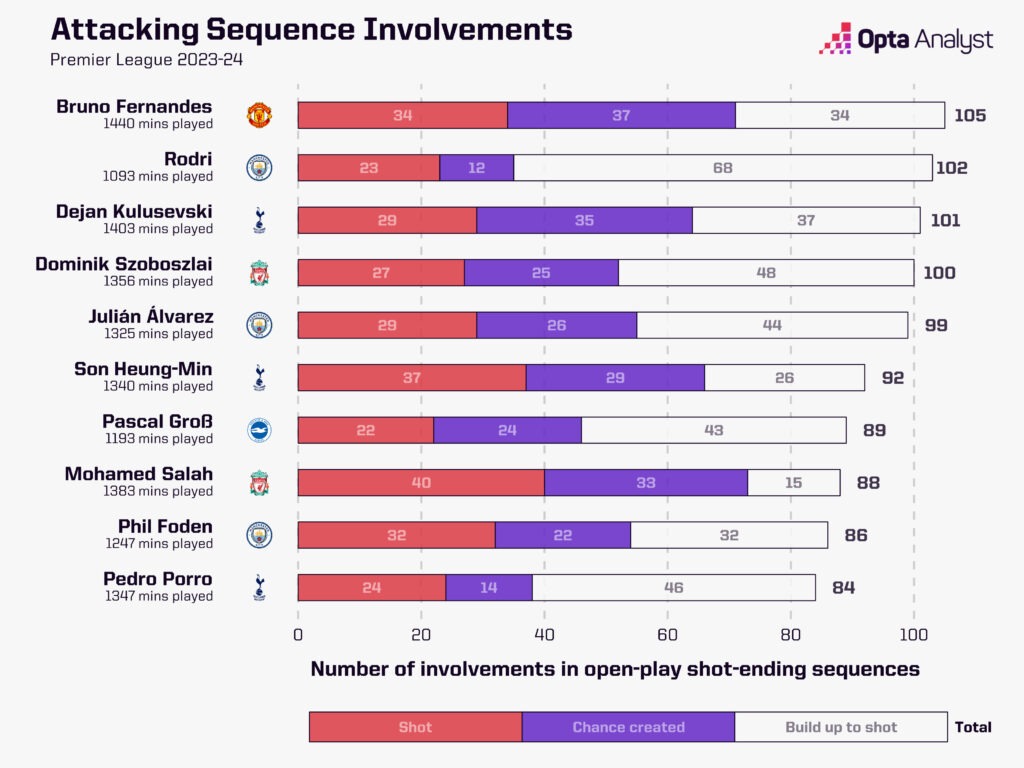
The 24-year-old has immediately looked comfortable in Postecoglou’s inverted full-back position. It’s a position that we’ve become accustomed to seeing across Europe in recent years, but Spurs do something different in that both full-backs invert simultaneously. In contrast, for Manchester City, Arsenal and Liverpool, for example, only one full-back will invert into midfield.
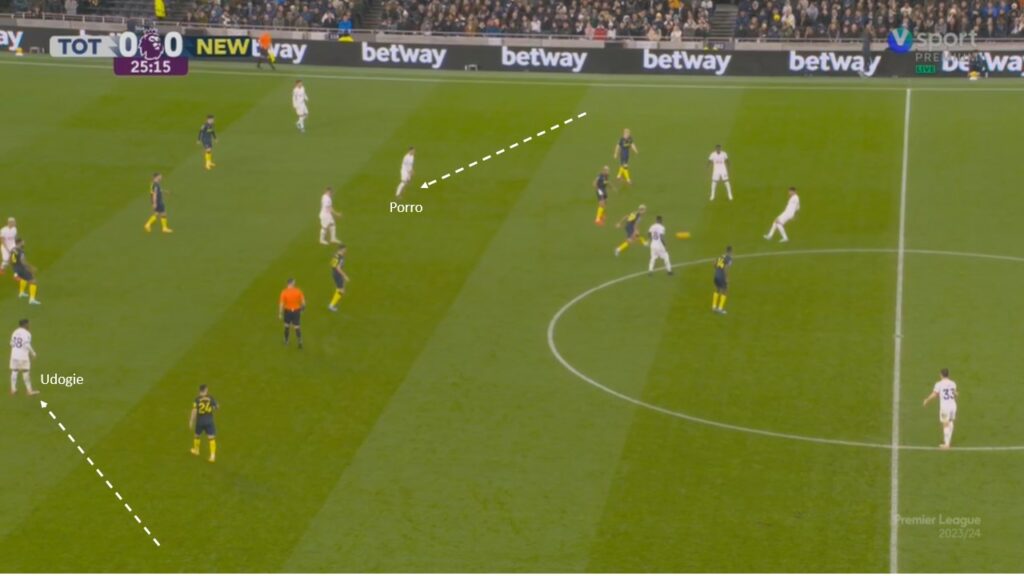
When Tottenham build up, both of their full-backs move into central positions at the same time, opening up a passing lane from the centre-backs to the wingers, who hold the team’s width, while also increasing the chances of Spurs overloading the opposition in central areas of the pitch. It’s an incredibly difficult role to play, particularly for a player who has spent his entire career – and presumably childhood, too – only ever receiving passes on the outside of the opposition’s structure and with every player on the pitch in front of them. It’s easy to understand why there would have been doubts over whether Porro, previously a wing-back who loved to get around the outside of the opposition’s defence and whip crosses into the box – something he was (and still is!) very good at – would be able to do this new job.
After all, it is a specialist role that requires players to know what is going on behind them receive on the half-turn. Scanning is something all young players are taught to do these days, but it would be understandable if it wasn’t something that came quite as naturally at the elite level to Porro as it would to a player who has grown up playing in central midfield. But he has taken to his new role better than anybody – possibly including Postecoglou himself – could have imagined. He has been one of Tottenham’s best and most consistent performers this season.
His touch map comparing the zones in which he is getting on the ball this season compared to last paints a vivid picture. Porro is having fewer touches of the ball down the right flank, while his touches infield are up dramatically. Having had barely any touches in the central lanes in 2022-23, he is averaging a few touches per game through the middle of the pitch, often ending up looking like a centre-forward or second striker.
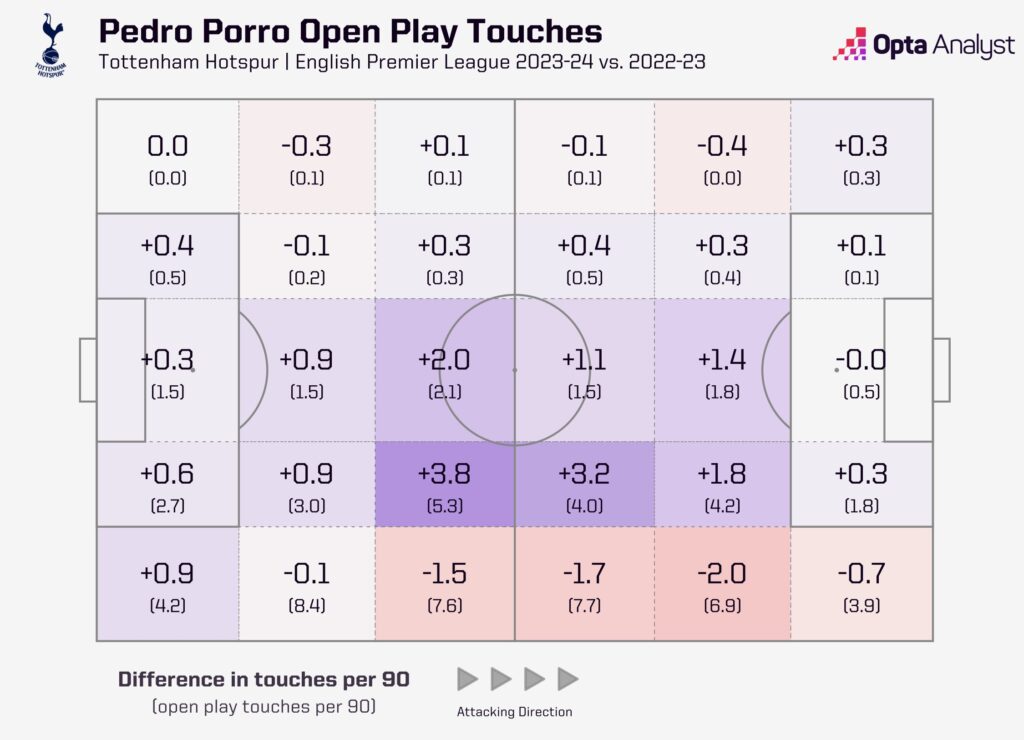
In Sunday’s 4-1 win over Newcastle, there was a point in the second half when Porro and Udogie – who had scored Tottenham’s first goal, tapping in a cross from inside the six-yard box – were Spurs’ furthest players forwards. Rather than full-backs, they looked like a centre-forward pairing after the actual centre-forward Son Heung-min had dropped into a position between the lines. If one still image was to encapsulate Postecoglou’s Tottenham, it would be this.
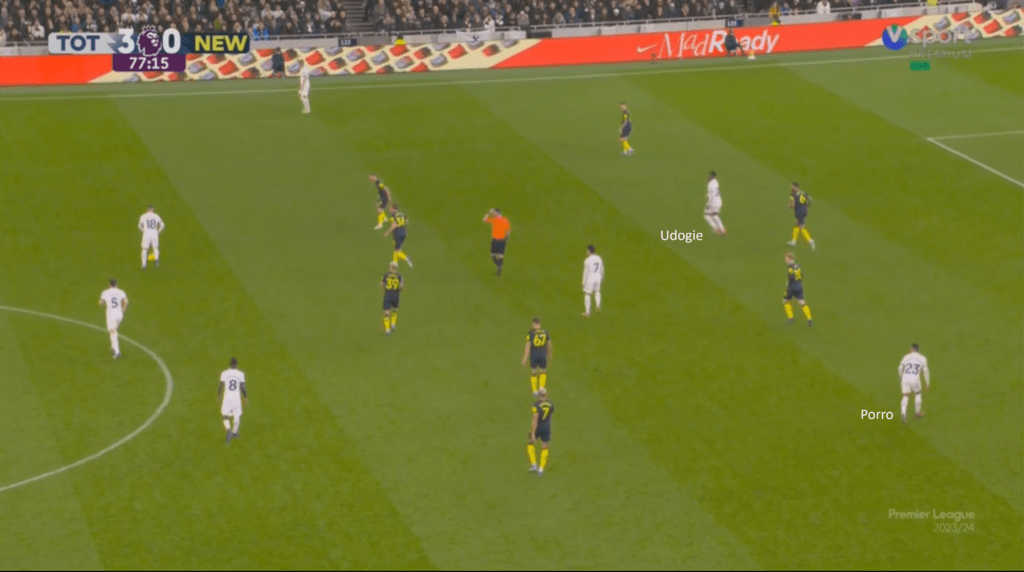
Looking at the average positions of the touches made by all 20 Premier League teams’ full-backs (or wing-backs), you can see just how unique Tottenham’s are. Only Luton’s wing-backs and the full-backs for Manchester City, Arsenal and Brighton are getting on the ball higher up the pitch on average than Tottenham’s (54.8m up the pitch). But Tottenham’s are also the narrowest set of full-backs or wing-backs in the league (37.2m apart). Only two other teams’ full-backs are less than 40m apart on average – Arsenal (37.7m) and Liverpool (39.9m) – while West Ham’s are more than 50m apart.
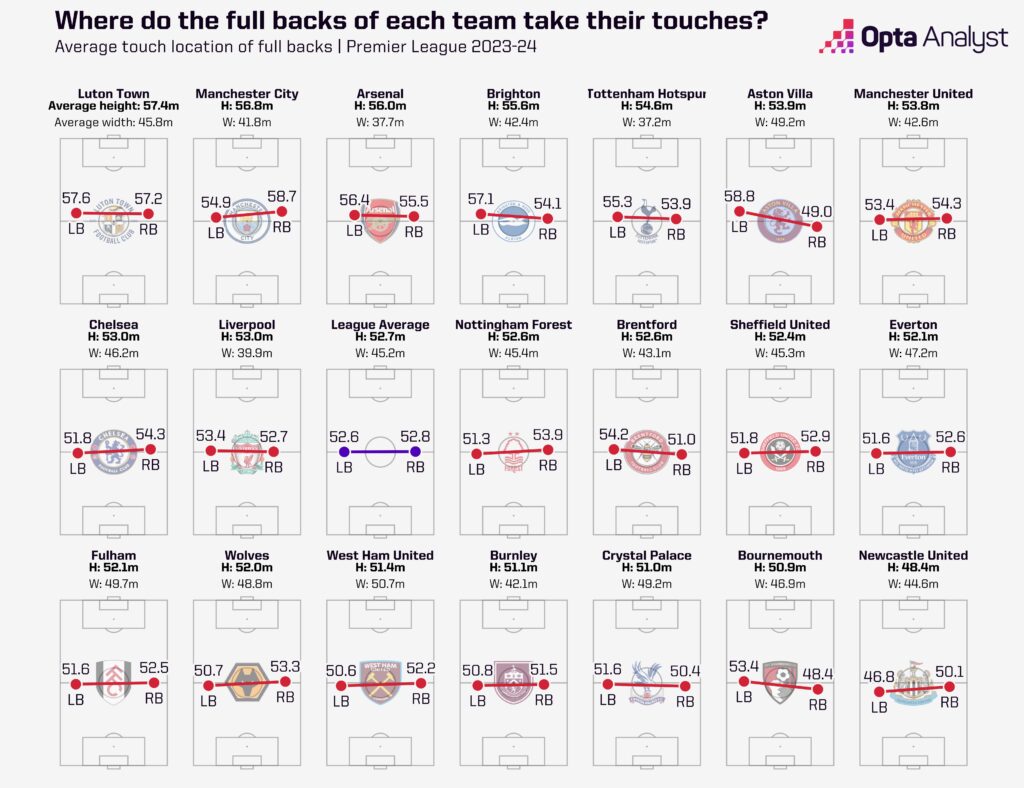
Having narrow full-backs isn’t necessarily a positive in itself, but Spurs are so extreme in this regard that it is noteworthy, particularly given Porro and Udogie are so new to the roles.
These advanced positions have led to Porro becoming a real attacking threat for Spurs. Only attackers Son (39), Richarlison (30), Dejan Kulusevski (29) and Maddison (28) have had more shots in Premier League games this season for Spurs than Porro (26).
Interestingly, though, given the positions he is taking up, Porro is in a minority among the Tottenham defenders in that he hasn’t scored this season. Cristian Romero (3), Micky van de Ven (1), Udogie (1) and Royal (1), all have at least one goal to their name in significantly less game time than Porro, who has had more shots than any other goalless player in the entire Premier League this season.
He made 15 Spurs appearances in the second half of last season and scored three goals from 26 shots; having failed to score from exactly the same number of shots in exactly the same number of appearances this season, it’s reasonable to assume that goals will come for him before long. The way Spurs play, chances will surely continue to flow.
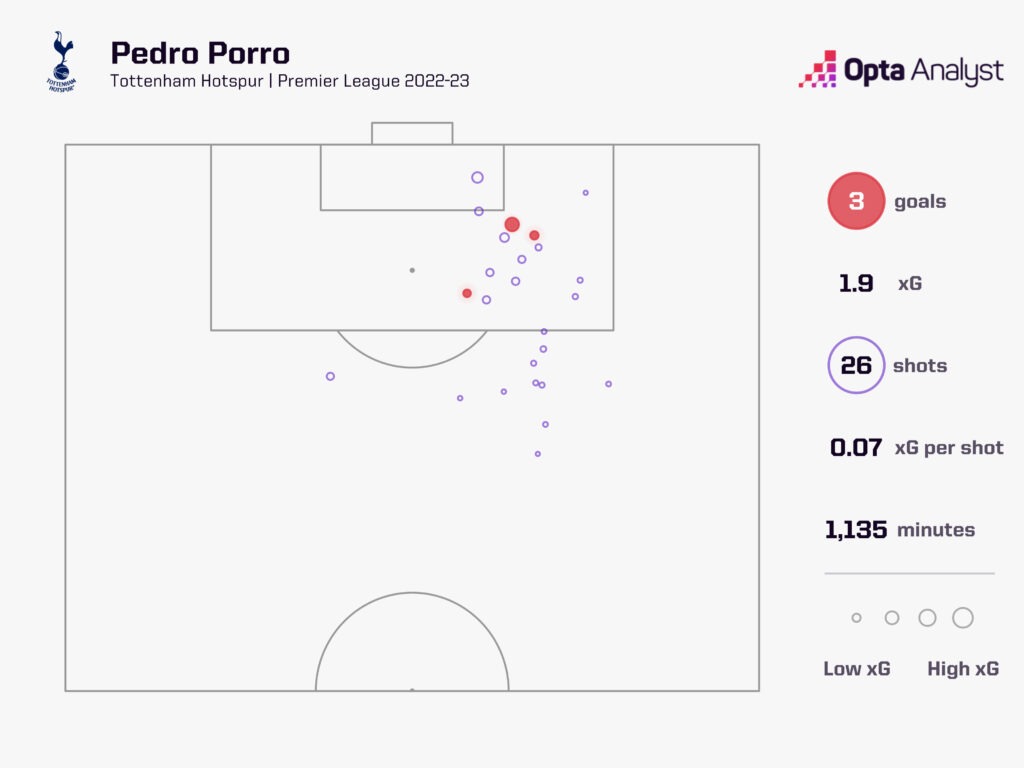
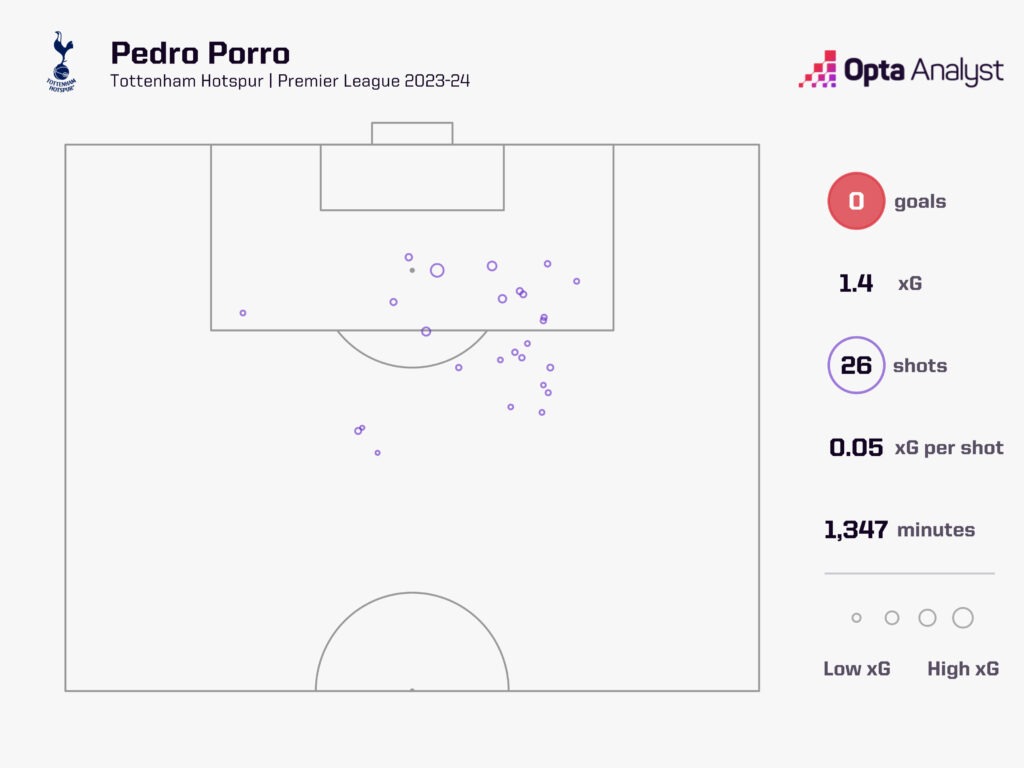
It is his creativity, though, for which he has been most useful. With five assists, he is joint seventh overall in the Premier League, just one behind Bukayo Saka (6), level with Maddison and James Ward-Prowse (both 5), and ahead of any Manchester United or Chelsea player.
In fact, since Porro’s Tottenham debut in February, the only defender with more Premier League goal involvements than him (11 – 3 goals, 8 assists) is Trent Alexander-Arnold (13), who is arguably the best attacking full-back in world football.
Looking at where he has created chances in open play this season compared to last gives us an even better idea of the role he is playing. While under Conte he would go around the outside and put crosses into the box, he is hardly doing that at all under Postecoglou.
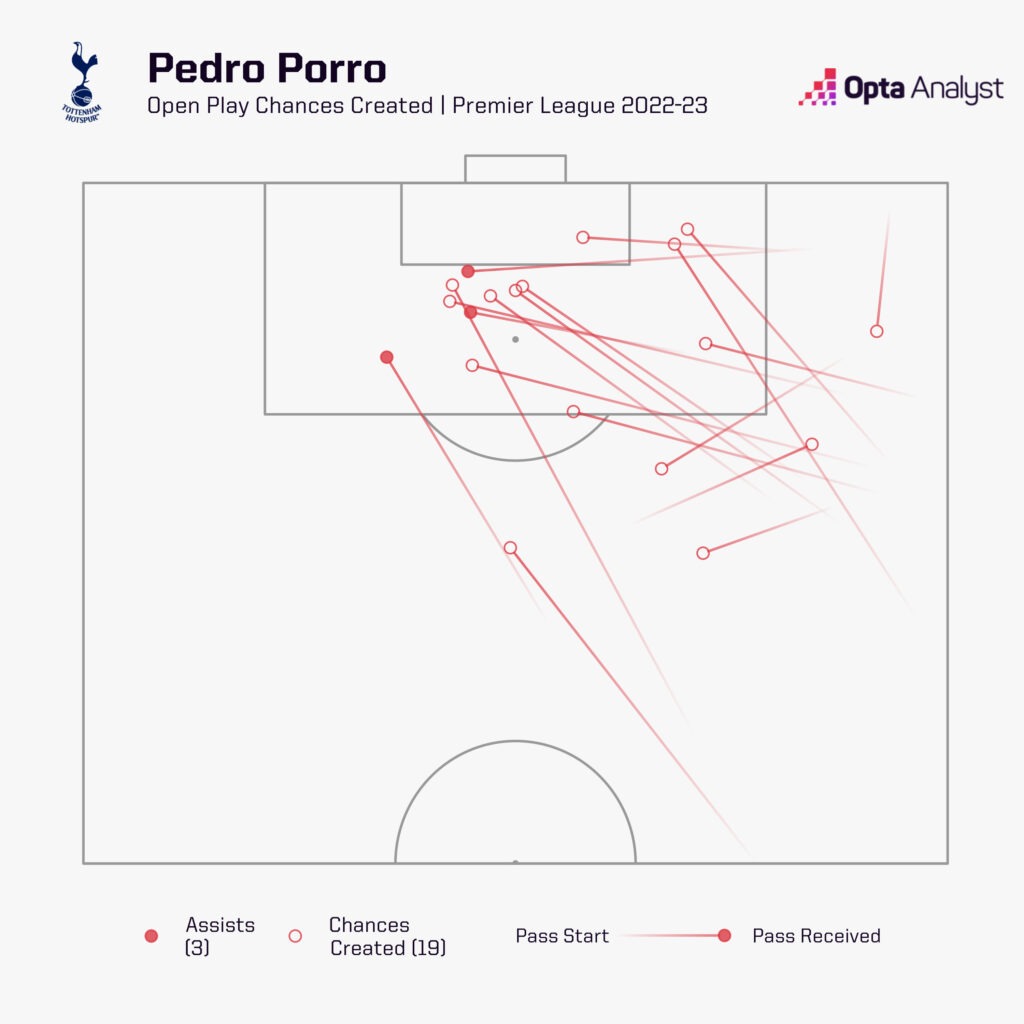
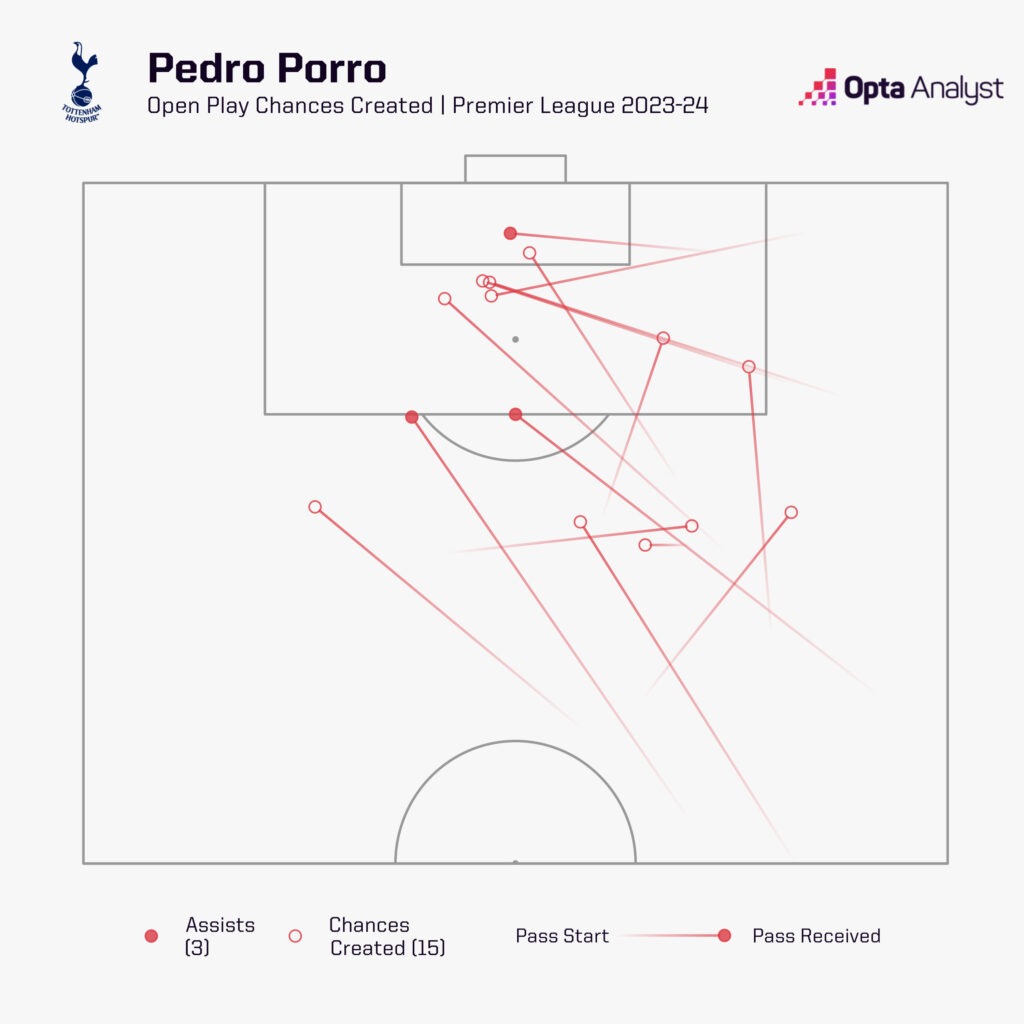
Far more of the chances he is creating are with balls from deep, central positions, as was the case for his assist for Richarlison’s second goal against Newcastle at the weekend.
In the absence of Maddison, Spurs have looked far less fluent in attack, and have been creating less. They averaged 1.8 non-penalty expected goals per game in their first 10 games of the season; that dropped to 1.2 np xG per game in the next five matches. In three of those five games, Porro ranked first for Spurs for xG assisted, while he ranked second in another. The only exception was the away draw against Manchester City, when Porro had to play a slightly more withdrawn role up against Jérémy Doku and Jack Grealish.
Spurs then found their post-Maddison groove for the first time against Newcastle last week. They posted their best expected goals tally of the season (3.0 excluding Son’s penalty), and Porro put in what was probably his best performance in a Spurs shirt, capped off with that assist for Richarlison.
It has been a memorable and hugely positive start to the Ange Postecoglou era in north London, and the success the new manager has had with converting Porro into a top-class inverted full-back should go down as one of his greatest achievements so far. With Porro playing like this and creating as much as he is, Spurs can be hopeful of a few more positive performances and results before they get their main creator back from injury in the new year.
Enjoy this? Subscribe to our new football newsletter to receive exclusive weekly content. You should also follow our social accounts over on X, Instagram, TikTok and Facebook.
